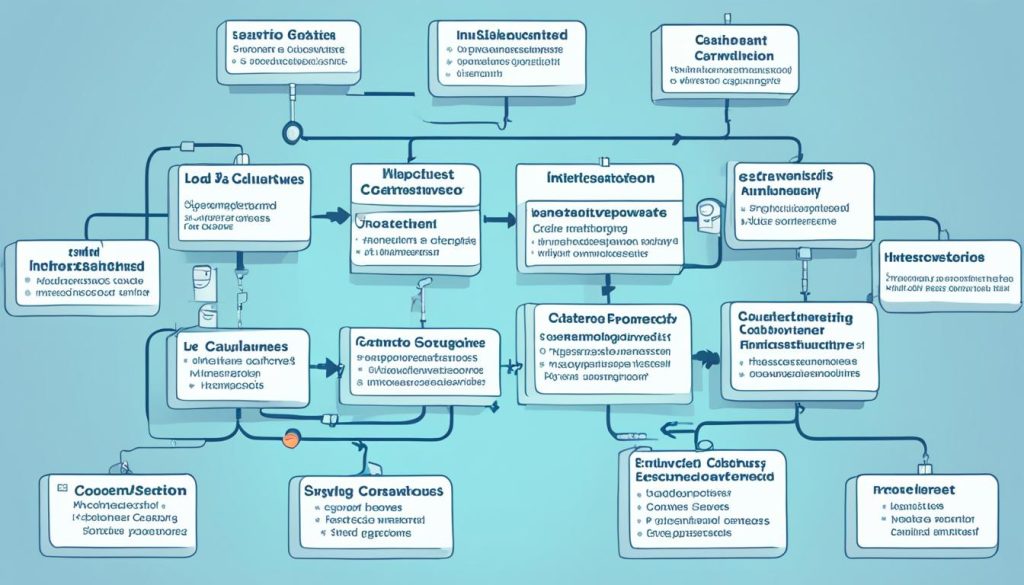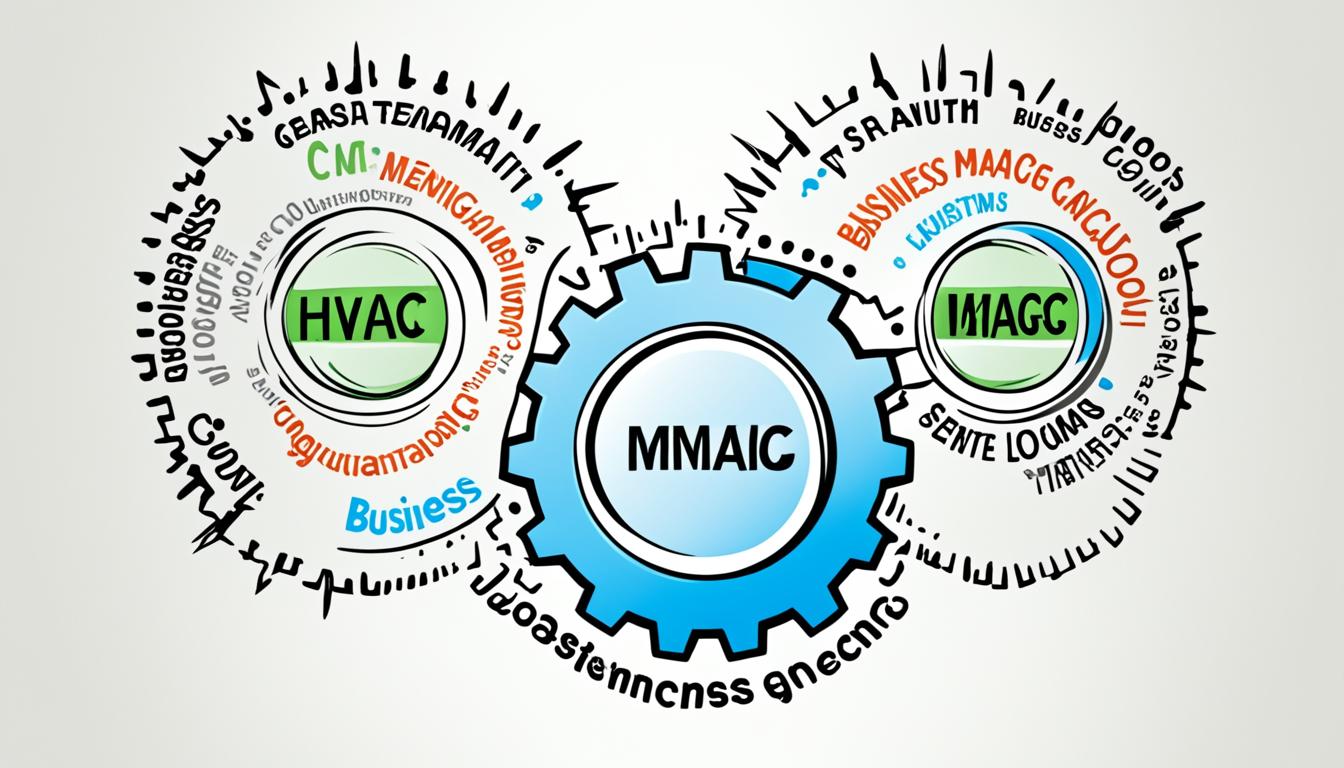You can link HVAC load calculation software with your business tools by following a step-by-step guide. First, pick software that works well together. Then, set up data connections and adjust settings for smooth info sharing. This way, you’ll make your HVAC projects more efficient and accurate.
Integration helps you run smoother by linking load calculations with project, customer, and accounting systems. This approach gets rid of data gaps, cuts down on mistakes, and gives you a full view of your HVAC business.
To begin, list your current business tools and find HVAC software that fits well. Choose software with open APIs or easy integration options. Then, figure out how data will move between systems, making sure important info like project details, client info, and results can move easily.
By linking these tools, you’ll make your work flow better, help in making decisions, and give your clients better service. The main thing is to pick software that meets your business needs and supports easy data sharing across platforms.
Understanding HVAC Load Calculation Software
HVAC load calculation software is a big deal for the industry. It helps you get the right equipment size, design efficient systems, and follow energy codes. Let’s dive into what makes this tool so important.
Key features of top HVAC load calculation software
Today’s HVAC software has cool features like smart algorithms and easy-to-use interfaces. They look at building layout, insulation, and how people use the space. Plus, they work with energy modeling for a full review.
| Feature | Description |
|---|---|
| Load management integration | Seamless connection with building management systems |
| Energy modeling integration | Detailed analysis of energy consumption patterns |
| 3D modeling capabilities | Visual representation of HVAC designs |
| Customizable reports | Tailored outputs for different stakeholders |
Benefits of using load calculation software in HVAC projects
Using this software makes your work smoother and projects better. It cuts down on mistakes, saves time, and makes sure you follow the rules. It’s also easier to work with your team and talk to clients.
How load calculation software improves accuracy and efficiency
This software uses exact calculations and the latest data to boost your design accuracy. It lets you quickly try out different ideas and test scenarios. You can easily compare equipment options and make your systems work better. This means happier clients and more efficient HVAC systems.
- Reduces manual calculation errors
- Speeds up the design process
- Facilitates better decision-making
- Improves overall project efficiency
The Importance of Business Management Tools in HVAC Industry
HVAC business management has changed a lot with digital tools. These tools are key for making operations smoother and more efficient in the HVAC market. By using construction software and mechanical design tools, HVAC companies can change how they work.
- Improved project management
- Enhanced customer relationship management
- Streamlined financial operations
- Better team coordination
- Accurate project planning and execution
When you mix these tools with HVAC load calculation software, you get a full solution for your business. This mix makes data flow smoothly between different parts of your business. It leads to big savings in time and money.
| Business Area | Benefits of Integration |
|---|---|
| Project Management | Real-time updates, resource allocation |
| Customer Relations | Improved communication, faster response times |
| Financial Management | Accurate invoicing, budget tracking |
| System Design | Precise load calculations, efficient equipment selection |
Using these tools together makes HVAC system design and installation more accurate. This makes your service better and customers happier. The construction software helps coordinate with other trades, cutting down on conflicts and delays.
It’s not just good to use HVAC business management tools; it’s a must to stay competitive today. These tools, when used well, can change your business and make you stand out.
Identifying Compatible Business Management Tools
Finding the right business management tools can make your HVAC operations run smoother. Let’s look at some key software solutions that work well with your load calculation software.
CRM Systems for HVAC Businesses
HVAC CRM systems are great for managing customer relationships. They keep track of service history, schedule appointments, and make communications personal. ServiceTitan and Housecall Pro are top choices for HVAC companies because they have features made just for them.
Project Management Software for HVAC Contractors
Project management software helps your team stay organized and on schedule. It helps with coordinating tasks, scheduling, and talking to the team. Procore and BuilderTREND are made for contractors. They help you manage projects from the beginning to the end.
Accounting and Financial Management Tools
It’s important to link financial tools with your HVAC software for correct billing and reporting. QuickBooks and Xero are great choices that work with your CRM and project management systems. They make invoicing and payments easier.
| Tool Type | Key Features | Integration Benefits |
|---|---|---|
| HVAC CRM | Customer tracking, scheduling, service history | Improved customer service, efficient dispatching |
| Project Management Software | Task assignment, timeline tracking, resource allocation | Better project oversight, increased team productivity |
| Financial Tools | Invoicing, expense tracking, financial reporting | Accurate billing, simplified accounting processes |
By linking these tools with your load calculation software, you get a full system that boosts efficiency in your HVAC business.
Steps to Integrate Load Calculation Software with Management Tools
Integrating your HVAC load calculation software with management tools can make your operations more efficient. The process involves several key steps. These steps ensure your HVAC software works well together and synchronizes data smoothly.

First, find software solutions that can work together. Choose tools made for HVAC businesses. They’re more likely to match well. After picking your software, plan how you’ll integrate it. Think about how data will move between systems and what you need for synchronization.
Next, set up the integration. Make sure data moves correctly between systems. You might need to work with IT experts or software providers for this. After setting it up, test the system to check its accuracy and efficiency.
- Map out data flow between systems
- Set up necessary connections
- Verify data accuracy across platforms
- Test system efficiency
Training your staff is key for success. Ensure they know how to use the new system well. This could be through workshops, practice sessions, or online tutorials. Always update and maintain your software to keep it secure and efficient.
By following these steps, you can build a strong, integrated system. This system will improve your workflow, data accuracy, and customer service. It will also make your operations more efficient for you.
Overcoming Integration Challenges
Integrating HVAC load calculation software with business tools can be tough. You might face challenges that slow down your work. Let’s look at common problems and how to solve them.
Common Integration Obstacles
Data compatibility is a big issue. Your load calculation software and management tools might not talk the same language. This can cause errors or lost data. Version conflicts and staff resistance to new systems are also common problems.
Solutions for Seamless Integration
Start with careful planning to overcome these issues. Pick software that works well together. Make sure data moves correctly between systems. Regular updates help keep things running smoothly. Cloud-based solutions are often better for compatibility and real-time syncing.
Training Staff on Integrated Systems
Training your team on HVAC software is key. Show them how the new system helps. Hands-on practice makes them feel more comfortable. Offer ongoing support to answer questions or concerns. With the right training, your team can use the tools well, making your HVAC projects more efficient and accurate.
| Challenge | Solution |
|---|---|
| Data compatibility issues | Choose compatible software, proper data mapping |
| Version conflicts | Regular updates, cloud-based solutions |
| User resistance | Comprehensive training, highlighting benefits |
Enhancing Workflow Efficiency Through Integration
Integrating load calculation software with business management tools is key to HVAC workflow optimization. This combo makes operations smoother, boosts productivity, and lowers costs. Let’s dive into how this can change your HVAC business for the better.

Picture a world where data moves easily from load calculations to project management systems. No more manual entry or checking things twice. Your team can focus on giving clients the best HVAC solutions.
Real-time updates are the magic part. When a technician adds data on-site, it goes straight to the office team. This quick info exchange helps in making faster decisions and planning projects better. You’ll see projects done quicker and customers happier.
Communication Boost
Integrated systems get rid of walls between departments. Design teams can share specs with installers easily, and maintenance has quick access to system histories. This better communication cuts down on mistakes and speeds up solving problems.
Productivity Improvement
With smoother workflows, your team can take on more projects without needing more people. Automated tasks give more time for important work, leading to a big boost in productivity. Projects will be finished faster and more efficiently than ever.
- Reduced manual data entry
- Faster project completion times
- Improved accuracy in load calculations
- Enhanced team collaboration
- Increased customer satisfaction
By using integrated software for HVAC workflow optimization, you’re setting your business up for success. The benefits go beyond just being efficient. You’ll see better profits and a competitive edge in the market.
Data Synchronization Between Load Calculation and Management Software
Getting data to sync up is crucial for HVAC software management. By linking load calculation and management tools, you can make things run smoother and more efficiently. Let’s look at how to keep data in check, use updates in real-time, and solve data conflicts in your HVAC business.
Ensuring Data Consistency Across Platforms
It’s important to keep data the same across all your HVAC software. Use a central database that everyone relies on. This way, there are fewer mistakes and everyone has the latest info.
Real-time Updates and Their Importance
For HVAC businesses, real-time updates are a must. They give you quick access to the newest project details, customer info, and load calculations. This means faster decisions and better service for customers.
| Benefits of Real-time Updates | Impact on HVAC Operations |
|---|---|
| Improved accuracy | Reduces errors in load calculations |
| Enhanced collaboration | Facilitates seamless teamwork |
| Faster response times | Improves customer satisfaction |
| Better resource allocation | Optimizes project planning |
Handling Data Conflicts and Discrepancies
When many users update info at once, data conflicts can happen. Use version control and rules for solving conflicts. Regular checks for data help fix any issues, keeping your HVAC software data safe.
Focus on keeping data in sync, using updates right away, and fixing conflicts fast. This approach makes your HVAC software better. It leads to more accurate load calculations, smoother project planning, and happier customers and business growth.
Maximizing ROI with Integrated HVAC Software Solutions
Integrated HVAC software solutions bring big benefits to your business. They combine load calculation software with management tools. This boosts your HVAC software ROI and lifts your business performance.
Cost-effectiveness is a major plus of these solutions. You’ll cut down on time and resources by making processes smoother and less prone to mistakes. This means lower costs and more profits for you.
| Metric | Before Integration | After Integration | Improvement |
|---|---|---|---|
| Project Completion Time | 4 weeks | 3 weeks | 25% reduction |
| Error Rate | 5% | 1% | 80% reduction |
| Customer Satisfaction | 75% | 95% | 20% increase |
| Annual Revenue Growth | 5% | 12% | 140% increase |
The upfront cost of integrated software might seem high, but the long-term benefits are worth it. You’ll see better use of resources, improved project planning, and more efficient HVAC designs. These lead to better customer service with quicker issue resolution.
By choosing integrated HVAC software, you’re setting your business up for growth and success. The ROI isn’t just about making more money. It also means being more efficient, accurate, and satisfying your customers.
Case Studies: Successful Integration of HVAC Load Calculation Software
HVAC software success stories show how companies use best practices and transform with integrated solutions. Let’s look at two examples that show how businesses used HVAC load calculation software to get great results.
Large Commercial Construction Company
A big commercial construction firm added HVAC load calculation software to their tools. This move led to:
- 20% fewer bid rejections
- 30% less change orders
- 15% higher customer satisfaction scores
- 10% better profit margins
They made their processes smoother and more accurate. This led to big improvements in many areas.
Small HVAC Contractor
A small HVAC contractor used an integrated software solution. This let them compete with big companies while staying efficient. The results were:
- 40% more projects they could handle
- 25% less time spent on estimates
- 35% better project completion rates
- 18% more revenue each year
This shows how HVAC software can help small businesses compete and grow.
| Metric | Large Construction Company | Small HVAC Contractor |
|---|---|---|
| Bid Rejection Decrease | 20% | N/A |
| Change Order Reduction | 30% | N/A |
| Customer Satisfaction Increase | 15% | N/A |
| Profit Margin Improvement | 10% | N/A |
| Project Capacity Increase | N/A | 40% |
| Estimation Time Reduction | N/A | 25% |
| Project Completion Rate Improvement | N/A | 35% |
| Annual Revenue Growth | N/A | 18% |
These stories show how HVAC software can change businesses of all sizes. It makes them more accurate, efficient, and profitable.
Future Trends in HVAC Software Integration
The HVAC industry is on the verge of a big change thanks to new technology. Soon, HVAC systems will work and connect in new ways. One big change is using augmented reality (AR) for maintenance guides. Imagine fixing an HVAC unit with 3D instructions right in front of you through smart glasses.
AI in HVAC will change how we do predictive maintenance. Smart systems will look at past data to predict problems before they happen. This means saving time and money by avoiding unexpected breakdowns. Soon, you’ll be able to control your HVAC with just your voice, making things easier.
IoT is taking HVAC technology to new levels. Soon, you’ll be able to check and change your HVAC settings from anywhere. This will make your system more efficient and comfortable. Blockchain technology might also be used to make sure HVAC service records are secure and honest.
These new changes in HVAC software will make things more efficient, accurate, and satisfying for customers. Keeping up with these trends will help you get the most out of your HVAC systems.





0 Comments